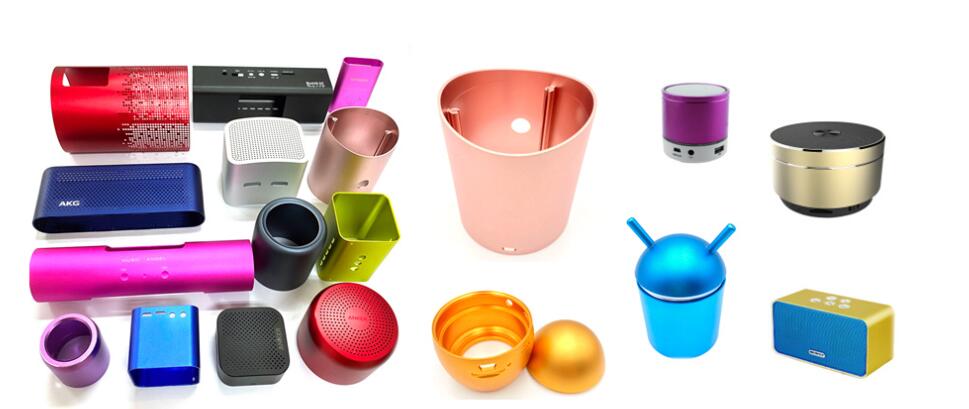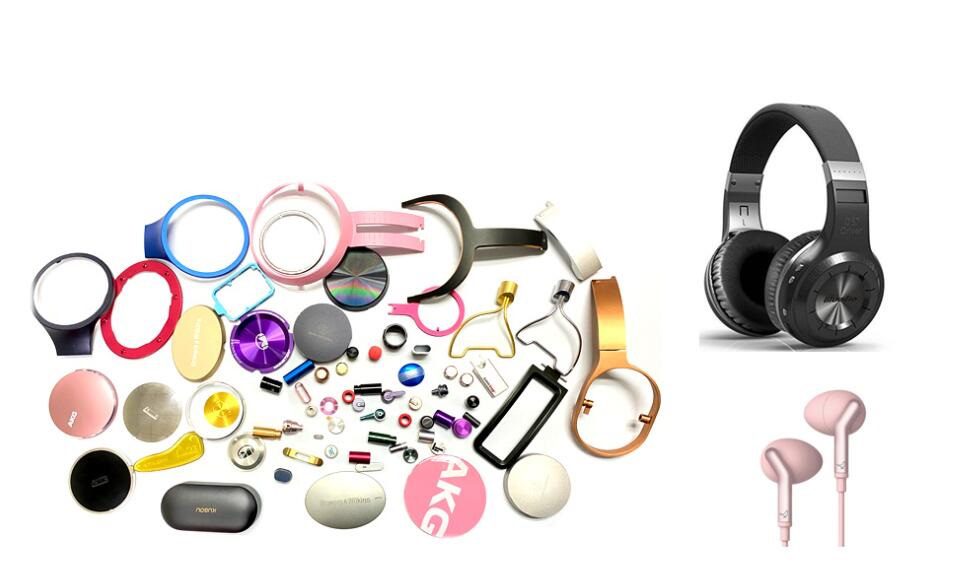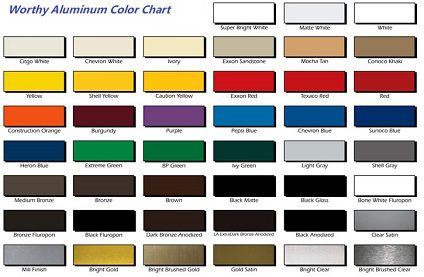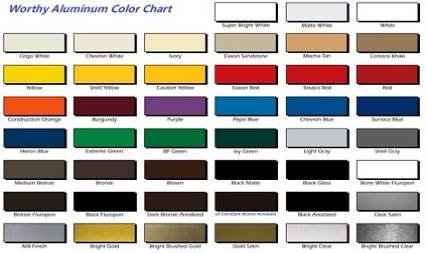Complete Guide on How to Anodize Aluminum Parts
Categories
Anodizing is an electrolytic process that can perform to enhance the thickness of a layer of oxides on the surface of metals. The anodizing process can apply to aluminum to give a better surface finish with more durability and corrosion-resistant properties.
Table of Content
■ How does Aluminum Anodizing Work?
■ Three Types of Anodizing Aluminum Process and Their Differences
△ Type I – Chromic Acid Anodize
△ Type II – Sulfuric Acid Anodize
■ What Are the Color Options for Anodized Aluminum?
■ Why are there color differences for the same color in the same batch?
△ 2、The color difference of the anodized film itself.
△ 3、The reflectivity of the substrate is different due to the pretreatment.
△ 4、Color differences in electrolytic coloring processes.
△ 5、Differences in surface gloss due to post-processing.
■ Advantages Of Anodized Aluminum
△ Improved Insulating Property
What is Anodized Aluminum?
Anodized aluminum is the part of aluminum in which the aluminum itself creates an anodized layer on it through an electrochemical process. No anodized layer is externally applied or painted, but the aluminum created it.
As the anodized layer is not applied externally, there is no risk of peeling, flaking, and chipping the layer from the aluminum. Thus, it makes aluminum more durable compared to other materials.
Moreover, it also increases its hardness by three times that of non-anodized aluminum. It makes it more lightweight. The weight of the anodized aluminum becomes 60% lighter than the other metals such as copper etc.

How does Aluminum Anodizing Work?
It works by creating an anodized layer on aluminum through an electrochemical process.
For this reason, the aluminum part's surface is rinsed and cleaned correctly in the first stage.
1.Then the cleaned aluminum part is added to an electrolytic solution bath. The electrolytic solution can be either chromic Acid or sulphuric Acid. It gives an electrically conductive coating containing many negative and positive ions.
Once the process starts and an electric current is applied, negative and positive electric charges are transmitted. The plates in the electrolytes can apply with the negative charge. On the other hand, a positive electric charge can pass through part of aluminum.
As we know, the opposite charges attract each other. Thus, the positive ions attract the negatively charged plates, and the negative ions interact with the positive aluminum part due to the electric current.
After that, the pores present on the aluminum surface can open up because of electrochemical reactions. The opening of the pores allows the escaping of the positive ions. After releasing positive ions, the pores dig down to the aluminum part's substrate in a uniform geometric pattern. A barrier layer can create by combining the aluminum's negative ions and the surface. This barrier layer makes the aluminum part more durable and corrosion-resistant.
Three Types of Anodizing Aluminum Process and Their Differences
The following are the chief types of the Anodizing Aluminium process.
- Chromic Acid Anodize (type I)
- Sulfuric Acid Anodize(type II)
- Hard coat Anodize(type III)
Chromic Acid Anodize (type I):
It is the most common type of the Anodizing Aluminium process. During Chromic Acid anodizing, chromic Acid is used to produce a tensile and thin anodized layer on the surface of the aluminum parts.
The chromic Acid acts as an electrolyte while the anode is aluminum. The particles are ejected from the anode when an electric current passes through the electrolyte. It results in the formation of microscopic grooves on the aluminum surface. The oxidation of microscopic grooves forms an oxide layer. It protects the aluminum from corrosion, making it more corrosion-resistant.
The color of chromic anodize is grey. When dyed, it grips less color because of being thin. It can serve as a protective, non-reflective coating for different optical parts when dyed with black color. But, dying with black color requires a high temperature.
Features of Chromic Acid Anodize:
- It is non-conductive
- It doesn't change dimensions, so it is suitable for tight-tolerance parts.
- It is an excellent option for assemblies and welded parts.
- It is considered best for bonding.
- It can be dyed in black color.
Applications of Chromic Acid Anodize:
It is used for the following parts:
- Welded parts
- Aerospace parts
- Precision machined parts

Sulfuric Acid Anodize (type II):
The sulfuric acid anodize makes use of sulfuric Acid instead of chromic Acid. It causes more ejection of positive particles of aluminum, and it causes the formation of a thicker oxide layer due to deeper microscopic grooves. As a result, a thick anodized layer is formed on the surface of the aluminum part, making it best for coloration. The coating thickness is 67% substrate penetration and 33% growth on the part's original dimension. You can get a matte finish if the parts can function mechanically or chemically treated before anodizing.
Features of Sulfuric Acid Anodize:
- It is cost-effective because of easy waste treatment.
- It can dye with many colors because of a more transparent finish.
- Finishing of various alloys can perform through it.
Applications of Sulfuric Acid Anodize:
It can use in the following components.
- Mechanical hardware
- Military weapons
- Optical parts
- Electronic and computer enclosures
- Hydraulic valve bodies

Hardcoat Anodize (type III):
Like anodized type II, it is also done using sulfuric acid-based electrolyte and high voltage. But, it is denser and thicker as compared to sulfuric acid anodize. The hard coat anodize is mainly used for applications where extreme wear is needed. Moreover, the thicker layer makes it suitable against corrosive environments, thus increasing its durability. It is considered best for conditions in which increased electrical insulation is required.
Features of Hardcoat Anodize:
The followings are the main features of Hardcoat Anodize:
- It is non-conductive.
- It can use for slide applications because of the improved surface of a part.
- It possesses a much harder finish.
- It can be dyed in black color. The other colors offer a less decorative appearance.
- It has improved wear resistance.
- It can be lapped or ground.
Applications of Hardcoat Anodize:
Hardcoat is used for the following components.
- Blast shields
- Swivel joints
- Cams
- Sliding parts
- Valves
- Insulation plates
- Gears
- Hinge mechanisms
- Pistons

Difference between Chromic Acid Anodize (type I), Sulfuric Acid Anodize (type II), and Hardcoat Anodize (type III)
Some significant differences are as below:
- In Chromic Acid anodize, chromic acid-based electrolytes can be used, while sulfuric acid-based electrolytes use the other two types.
- (Type I) chromic Acid reduces the substrate thickness by .02-.4 mills. On the other hand, type II sulfuric acid reduces it much more time.
- (Type I) chromic Acid does not leave any corrosive residues, while Type II can.
- Chromic Acid is much thinner as compared to type II and type III.
- Type II is thicker than type I, while type III is the thickest layer. You can't dye type I in color, while type II can dye in many colors.
- Due to the thin layer, type I doesn't offer much corrosion resistance. The thick layer of type II makes it more corrosive-resistant than type I.
- While hard coat type III has the thickest layer and offers much more corrosive resistance than type II.
- Type II is more durable than type I, while the thickest layer of type III makes it more durable than type I and type II.
What Are the Color Options for Anodized Aluminum?
There are many kinds of color for anodized aluminum, from blow you could see them.

Why are there color differences for the same color in the same batch?
Some reasons for the color differences for the same color in the same batch are:
1: Raw material quality:
The raw material quality significantly causes the color differences for the same color in the same batch. Aluminum comes in different varieties. Besides aluminum, it may contain many other materials such as copper, silicon, etc. These materials' presence changes aluminum's quality, producing different colors. Thus the difference in the raw material quality changes the colors.
2: The color difference of anodized film itself:
The color of the anodized film also causes color variations in the same batch. Different colors of anodizing films produce different colors resulting in color variations.
3: The reflectivity of the substrate is different due to pretreatments.
Before the anodizing process, the substrate may be subject to different pretreatments. These pretreatments cause the varying reflectivity of substrates. Thus, it causes color variations in the same batch even when the same color you use for the process.
4: Color differences in electrolytic coloring processes.
During the anodizing process, the coloring can do by electrochemical action using the electrolyte. The electrolytic coloring process may cause color differences that result in color variations for the same color in the same batch.
5: Differences in surface gloss due to the post-processing.
After the anodizing process, post-processing can complete after the main processes have been completed. It performs its function of enhancing the light reflectivity capacity of a surface. In other words, you can say that it increases the surface gloss. The post-processing causes the differences in surface gloss, causing the color variations for the same batch even after using the same color.
Advantages of Anodized Aluminium
Anodized Aluminium offers several advantages. Some of its common benefits are as follows:
Improve material properties:
Anodized Aluminium dramatically improves the material properties of the metals. It increases the hardness of the material, thus automatically increasing the strength of the metal, making it stronger. Moreover, it makes it long-term malleable and ductile and increases its toughness.
It enhances the corrosion-resistant properties of the metal. The aluminum oxide layer provides a defense system against corrosion, thus preventing it from corrosion even under extreme conditions. The anodic coating of anodized aluminum also makes it more stable to ultraviolet rays, thus preventing it from damage.
Better Surface Effect:
The anodizing provides excellent surface properties to the aluminum. It provides a better decorative finish and provides a natural metallic anodized finish. It also dramatically reduces the surface roughness increasing the surface gloss. The best feature of anodizing is that it does not cause the surface to fade like other processes.
The anodized layer doesn't peel off and chalks, thus reducing the risk of surface fade. The risk of filiform corrosion of the metal surface can also reduce because of anodizing. The anodizing doesn't cause any changes in the original design of the metal. Thus, the original design can preserve. It also reduces the risk of failure of adhesion of anodic film of aluminum.

Improved insulating property:
The anodizing process improves the insulation properties of aluminum. The coating of aluminum oxide acts as a good insulator, thus improving the insulation. The coatings act as excellent electrical insulators, blocking the passage of electric current through them. Moreover, it also provides thermal insulation to prevent heat transfer.
So, the electricity and the heat can't pass through the coating. Thus, it also protects the aluminum from any damage caused by electricity and heat because heat and electricity can't affect the anodized layer.
Applications for Anodizing Aluminum
Following are the main applications of Anodized Aluminium.
Anodized aluminum can use in decorative artworks and structural parts in the construction and architecture industry. Moreover, it uses in residential buildings and commercial products. Consumer goods also show the use of anodized products. It can use in jewelry, sporting materials, food preparation tools, and appliances.
The suitable insulation property of anodized aluminum also makes it excellent to use in space. The anodized aluminum uses in the trusses of the NASA international space station. The aluminum trusses with an anodizing layer efficiently distribute heat. Being an insulator prevents the surface from getting hot. Thus it provides excellent protection from the sun's heat in the space station.
Anodized aluminum is also used in handrails because of its perfect durability. Handrails are the components used outside the space station. These are considered lifelines and anchors for astronauts of ISS and use anodized aluminum.
Moreover, the anodized aluminum uses for various appliances such as microwave equipment, coffee brewers, televisions, refrigerators, ranges, dryers, light fixtures, dust covers, storm doors, mailboxes, patio covers, and window frames, and bathroom accessories. It uses various components in the food industry, such as grills, coolers, pans, and display cases. Similarly, it uses in components of various aerospace vehicles.

Conclusion
Anodizing aluminum is a process of increasing oxide layer thickness on the metal through an electrochemical process. Different anodizing processes use aluminum using varying electrolytes such as chromic Acid, sulfuric Acid, etc., providing aluminum with varying oxide thickness and other better properties.
The anodized layer makes aluminum corrosion-resistant and increases its thickness, durability, and insulation. In other words, it increases its material, surface, and insulation properties. Because of its excellent properties, anodized aluminum is used in industrial components and shows applications in components used in space, such as trusses and Handrails.
Worthy Hardware is a CNC manufacturing and sheet metal fabrication company,including CNC machining services,CNC milling services, CNC turning services, laser cutting services and stamping services.Call us +86-76989919645 or email us [email protected] for more discounts for your projects.

